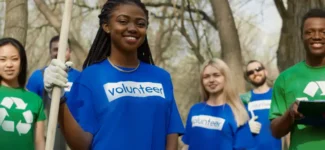It’s no secret that stories are one of the most effective ways to reach people’s hearts and leave a lasting impression. For nonprofit organizations, this means that sharing personal stories with donors can go a long way toward reaching your fundraising goals.
Powerful storytelling allows people to connect with characters who share their personal hopes, concerns, and values. If your storyteller is a constituent who has benefitted from your nonprofit’s services, their story can cause supporters to feel invested in helping you fulfill your purpose. These stories can be especially impactful if they’re told in person during an event.
It’s essential to be respectful and accommodating when asking your nonprofit’s constituents to share their stories at a fundraising event, since they’ll be discussing potentially sensitive details about their lives. To maximize your constituents’ storytelling potential while remaining considerate of their boundaries, let’s review best practices for enlisting constituents to tell their stories.
1. Approach nonprofit storytelling with respect
Oftentimes, nonprofit communications feature the struggles and hardships of those they serve to raise awareness and encourage giving. For instance, television commercials featuring newly rescued animals and somber music are particularly successful because they appeal to donors’ emotions, compelling them to help the animals featured.
At the same time, it’s critical not to capitalize on the pain and suffering of individual constituents to raise funds. Too much negativity may cause supporters to feel helpless or demoralized about your cause. Your nonprofit can avoid this by:
- Directing attention to the root causes that led to the need for your services, rather than the personal factors leading to the constituent’s situation.
- Focusing on the positive impact you’ve made on your constituents.
- Recognizing the power dynamic between your nonprofit and constituents, so you can proactively assure them that they will receive the same level of service from your nonprofit, no matter their choice about sharing their story.
By orienting your constituents’ stories around action and change, you can empower your audience to believe that they’re capable of driving greater impact.
2. Find a storyteller for your fundraising event.
Before you can share an impactful story with your supporters, you’ll first need to find a speaker to attend your upcoming fundraiser. This should be an optional opportunity for those who are interested in discussing the impact your organization has had on their lives. Try reaching out to former and current program participants to find potential speakers.
Former program participants
With the help of a nonprofit CRM, take a look at your nonprofit’s past constituent data to identify individuals who were positively impacted by your services and no longer require your support.
Since these individuals have distanced themselves from their former situations, they may feel more empowered to share the changes that have taken place in their lives. This is a wonderful opportunity for them to give back to the program that helped them by sharing how your organization helped them reach a better place in their lives.
Current program participants
Inviting current program participants to share their stories can be a delicate but rewarding endeavor. After all, these individuals are still affected by the situation your nonprofit is trying to remedy each day.
If one of your current program participants agrees to share their story at a fundraising event, the immediacy of their problems may be more effective in urging potential donors to take action and contribute to help that participant.
For both former and current constituents, consider creating an open invitation to record or tell program-related stories as well. This removes the pressure of presenting in front of a crowd and may encourage more people to agree to talk about their experiences.
3. Help the constituent prepare their story.
Once a constituent has agreed to share their story at your fundraiser, provide them the support and resources they’ll need to prepare. Along with remaining respectful of their boundaries, remember to:
- Provide your constituent with a list of questions that you’ll either ask them during the event or they should prepare to answer in their story.
- Ensure that the constituent feels safe to speak openly, whether you’re recording the interview in advance or they’re speaking in-person at the event.
- Offer the constituent opportunities to rehearse or practice talking points before the fundraiser.
Additionally, to make their involvement as easy and convenient as possible, your nonprofit can offer to reimburse any travel or childcare expenses related to their participation in your event. Sending them a gift card is another way to thank your speakers for taking the time to share their story to benefit your organization.
Following up after your constituent’s story
Some of the most compelling stories are personal and vulnerable. By agreeing to speak at your fundraising events, your constituents are entrusting you and the audience with their personal experiences.
Therefore, it’s crucial that you promptly follow up with your speakers after each fundraiser to thank them for their contributions. As part of your appreciation, report your fundraising results so they can see how they helped drive your event’s success.




